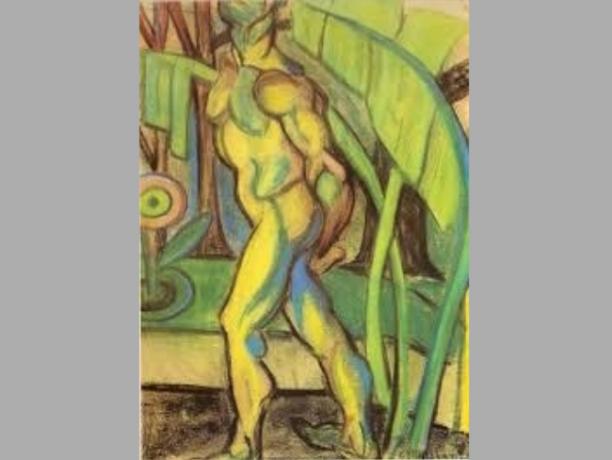Anthropophagy is the action of eating human flesh, which among humans is also known as cannibalism. Anthropophagy was practiced in esoteric rituals as a way for those who eat to incorporate the qualities of the individual who is eaten, such as the bravery and courage of a defeated warrior.
This same concept of incorporating qualities was the starting point for the call Anthropophagic Movement, or cultural anthropophagy, a modernist artistic expression in Brazil whose main work was the Abaporu, by Tarsila do Amaral, painting from 1928.
The term anthropophagy comes from the addition of the Greek words anthropo, which means man, phagia, which is to eat. Anthropophagy is the act of an anthropophagous, one who eats human flesh. Therefore, among humans, anthropophagy is cannibalism, since the cannibal being is one who eats the flesh of his own species. Animals that eat human flesh are considered cannibals but not cannibals.
Anthropophagy recorded historically is directly linked to ritualistic acts, in the sense of incorporating characteristics of the other. But it is known that there were peoples who needed to feed on the flesh of their peers as a form of protection, survival instinct, among other reasons linked to vital needs.
The term cannibalism is associated with anthropophagy because of an indigenous community that inhabited the Caribbean region, and that performed rituals where human flesh was consumed. During the Spanish Christopher Columbus' exploration of the region, the Spaniards were terrified of this practice and gave the name "cannibals" (in reference to the Caribbean region) to the Indians.
In Brazil, the Indians of the Tupinambá tribe practiced cannibalism as part of a war ritual. They consumed the flesh of opposing warriors in order to "absorb the bravery and courage" of the enemy. Being eaten was considered one of the most honorable ways to die, because it meant that the warrior was considered brave and had a strong spirit.
Anthropophagic Manifest
The Manifesto Antropofágico, or Antropófago, was published by Oswald de Andrade in the Revista de Antropofagia, in 1928, during the modernist movement in Brazil.
The text in manifesto format was inspired by the Futurist Manifesto, by the Italian Felippo Tomaso Marinetti, and takes as its starting point the painting Abaporu, by Tarsila do Amaral.
The concept of anthropophagic here refers to the "deglutition" of international styles and models to produce something totally new and with the face of Brazil, and it fought against the Eurocentrism of art.
Learn more about modernism.



